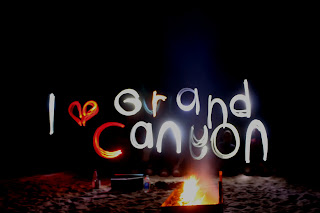A guide to outfitting a white water canoe
Me and my Taureau, Ribo, Tessin, Switzerland. Photo by Sanne
There has got to be hundreds of different ways to set up and outfit a white water canoe. Here is a quick guide to how I outfitted my Esquif Taureau with some tips and tricks for pimpin’ your ride.
The bits I used; foam, bungee cord, rope, plastic pipe, old straps and nuts and bolts.
The tools, not much cos I like simple and easy.
I cut out the retaining foam for the rear airbag and cut the back of the saddle so it is vertical. I find I slip less in the saddle when the back is vertical. I remove the air bag retaining foam from the back of the saddle to allow the airbag to come forward over my feet thus holding them down. For me the factory saddle is the right size and glued in the right place. If you need to trim the saddle or bulkhead to fit do this before starting on the rest of the customisation.
Cutting back the saddle, I measured it up before I started sawing.
Cutting the back airbag foam out.
Step one finished.
To anchor my thigh straps I use a piece of plastic pipe that fits tightly into the equalisation hole on the bottom of the saddle. The pipe has some webbing bolted into it as strap anchor points. This system requires no gluing and allows straps to be added quickly and easily to the canoe should you desire.
Drain pipe, some old strap sewn together and a nut and blot. a super easy strap anchor system.
The strap anchow system in place, this is the simplest solution I know of.
I glue foam to the floor using contact glue, extending from the foam knee pads right back to the foot rests. This helps to support my shins and takes up some dead space that water would otherwise fill up, foam is much lighter than water!
Foam glued into the hull, it is comfy, warm and takes up water space. It's great!
I drill a pair of small holes on either side of the front deck and thread some 6mm bungee cord through to act as attachment points for gear. I clip rescue gear in on one side and a small dry bag containing a first aid kit in on the other. Storing gear in a Taureau is tricky and this is one of the best ideas I have on solving the problem.
Drilling the equipment anchow holes.
My rescue gear clipped in, photo from inside the canoe.
I found that I often use the bungee cord on the water bottle and throw bag attachment points to lift and carry the canoe. This sucks because the bungee cord is not designed for this purpose and it will break when you least want it to. So I added some more carrying handles to the deck. I drilled holes, threaded the rope through added washers and knotted the rope.
My new carrying handles, superb.
Using a short length of webbing, metal D rings and bolts and washers I make an anchor point for the other end of my thigh straps. Attaching the straps to D rings allows for rotation and makes it easy to add straps without the need for tools.
D rings from inside, note the rubber pipe on the end of the bolts to protect my heals and the airbags.
And from the top.
To make inflating my airbags as easy as possible I cut out holes through the front and back of the saddle to allow me easy access to the inflation tubes. I used length of old paddle shaft to cut the holes out.
Cutting out my airbag tube holes with a bit of old paddle shaft.
In my opinion hip pads are one of the post performance enhancing additions you can make to a white water canoe. I make my own out of foam, craving and shaping them to fit using a rasp and sandpaper. It is sometimes easiest to carve the hip pads to approximately the right shape, glue them in using contact glue and fine tune the fit when the glue is dry.
Hip pads, they rock.
I try to make my outfitting as simple and as effective as possible, I would much rather paddle my canoe than fiddle with it!
My Kober split paddle fits neatly in the back of the canoe, safety first.
If you have any further questions please don’t hesitate to send me an email.
Paddle safe,
James









































